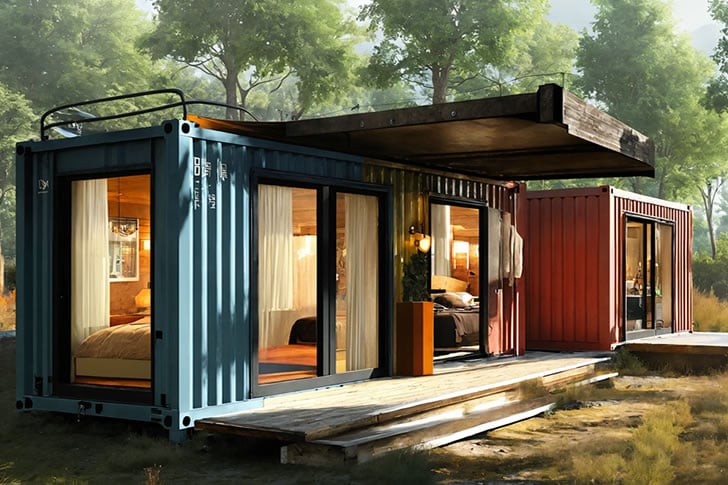The Ultimate Guide to Container Homes: Affordability and Sustainability
Container homes have risen in popularity due to their affordability and sustainability. Learn how to make the very of these eco-friendly and budget-friendly housing options.

Container Homes: A Guide to Affordable and Sustainable Living
Container homes have gained traction as a modern housing solution that combines affordability with sustainability. These innovative structures, built from recycled shipping containers, offer a unique architectural style while promoting eco-friendly living. Here’s how to make the most of these budget-friendly housing options.
Understanding Container Homes
Container homes are residences constructed using repurposed shipping containers. They not only provide a contemporary aesthetic but also contribute to environmental sustainability by reducing waste and utilizing recycled materials.
Affordability of Container Homes
Initial Cost Savings
One of the most attractive features of container homes is their cost-effectiveness. Shipping containers typically range from $2,000 to $5,000 each, making them a fraction of the cost of traditional homes. Depending on your design and the number of containers used, you can create a functional and affordable living space.
Reduced Construction Time
Container homes can be constructed more quickly than conventional homes due to their pre-existing structure. This speed translates to lower labor costs and allows homeowners to move in sooner, further reducing overall housing expenses.
Lower Utility Bills
With the ability to customize container homes for energy efficiency, homeowners can significantly lower their utility bills. Incorporating features such as solar panels, high-quality insulation, and energy-efficient windows can lead to substantial savings over time.
DIY Opportunities
For those with a knack for construction, building a DIY container home can be a fulfilling and economical project. Numerous online resources and tutorials can guide you through the process, enabling you to save on labor costs while creating a personalized living space.
Sustainability of Container Homes
Recycling and Upcycling
Utilizing shipping containers for housing is an effective way to recycle materials that would otherwise contribute to landfill waste. This practice reduces the demand for traditional building materials, which often have a larger environmental impact.
Energy Efficiency
Container homes can be designed to maximize energy efficiency. By incorporating proper insulation, strategic window placement, and renewable energy sources like solar panels, these homes can significantly reduce energy consumption and lower your carbon footprint.
Conservation of Resources
Traditional construction methods often result in substantial material waste. In contrast, building with containers allows for precise material usage, minimizing waste and enhancing the sustainability of the project.
Eco-Friendly Design Features
Container homes are well-suited for incorporating eco-friendly design elements. Features such as green roofs, rainwater harvesting systems, and sustainable landscaping can further enhance the environmental benefits of container living.
Tips for Building Container Homes
Choose the Right Container
Selecting high-quality shipping containers is essential for durability. Opt for containers that have been minimally used and are in good condition to avoid potential structural issues.
Insulation is Key
Effective insulation is crucial for maintaining comfortable indoor temperatures. Consider options like spray foam, fiberglass, or eco-friendly insulation materials to keep your home cozy in winter and cool in summer.
Plan for Ventilation and Natural Light
To prevent containers from feeling dark and cramped, incorporate ample windows and skylights. Adequate ventilation is also important for ensuring good air quality and comfort within your home.
Foundation Matters
Despite being lighter than traditional homes, container homes still require a solid foundation. Depending on local climate and soil conditions, foundations can range from simple concrete piers to more complex structures.
Get Professional Help When Needed
While a DIY approach can save money, it’s wise to consult professionals for specialized tasks such as electrical work, plumbing, and structural modifications. This ensures safety and compliance with building codes.
Consider Local Regulations
Before starting your container home project, research local building codes and zoning laws. Some areas may have specific regulations regarding the use of shipping containers as residences, so ensuring compliance is essential to avoid legal issues.
Conclusion
Container homes present an affordable and sustainable living option that resonates with contemporary eco-conscious values. By understanding the benefits and key considerations involved in building and maintaining container homes, you can create a unique, efficient living space that meets your needs while contributing to a more sustainable future. Whether motivated by cost savings or environmental concerns, container homes offer a stylish and practical alternative to traditional housing.









